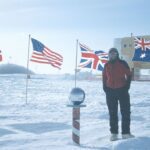Dr Boris Albijanic from Curtin’s WA School of Mines has a dream – a dream in which Australia gets a whole lot more out of its nickel laterite.
Nickel laterite accounts for 67 per cent of Australia’s nickel reserves but between only 30 and 40 per cent of nickel production.
The majority of nickel is instead produced from nickel sulphide reserves, where flotation can be used as a separation technique.
Meanwhile, leaching is currently the only technique that works on Australian nickel laterite – which is where Dr Albijanic hopes to make a breakthrough.
“Flotation is extremely popular in Australia but nobody is using it for nickel laterite,” Dr Albijanic said.
“In India and Indonesia they use flotation on nickel laterite. It has been tried in Australia but so far hasn’t worked.”
Dr Albijanic believes mineralogy is potentially a major factor in why flotation separation from nickel laterite has not succeeded in Australia.
He is hoping to attract funding for research that he says could make a huge difference to cost and environmental burdens associated with production from nickel laterite.
“Leaching uses a large amount of chemicals, which is expensive and not environmentally friendly,” Dr Albijanic explained.
“Flotation is much more environmentally friendly. You use only small amounts of reagent and chemicals at starvation levels.
“If we can use the knowledge from India and Indonesia in Australia, we can dramatically reduce the cost of production of nickel from nickel laterite.”



